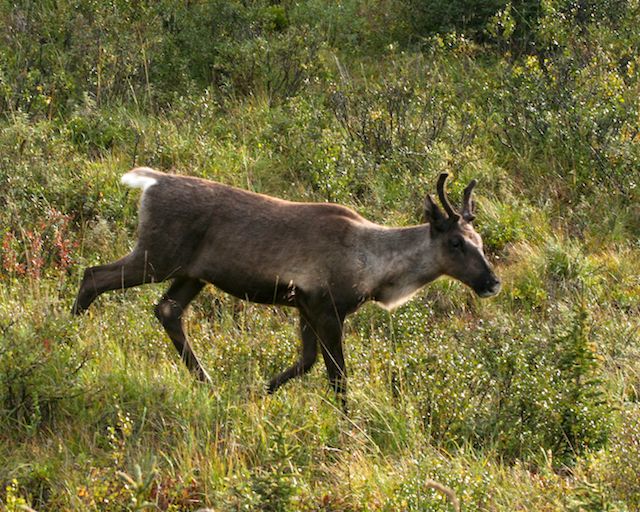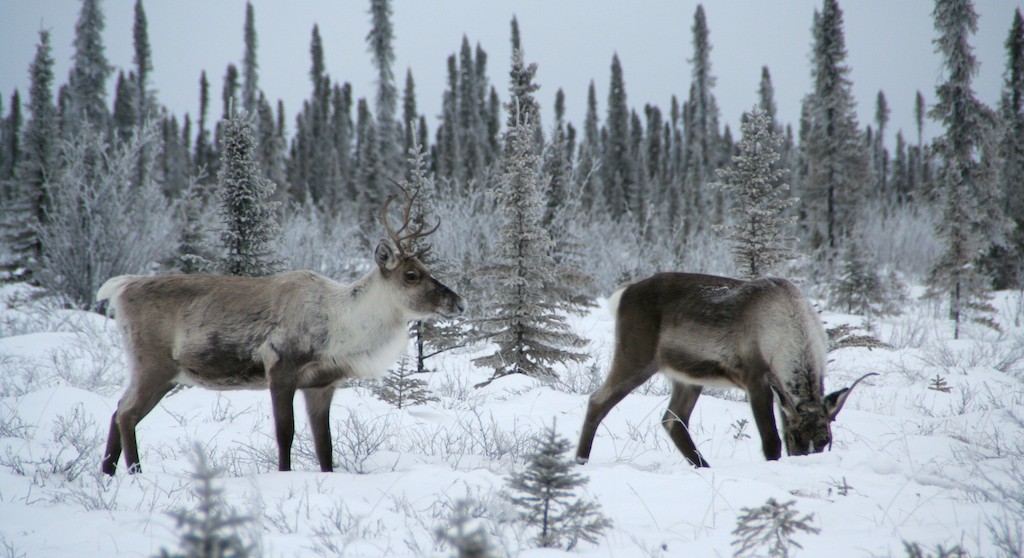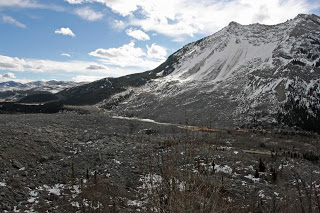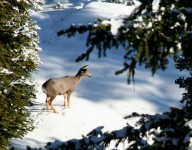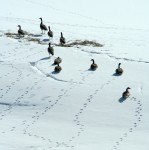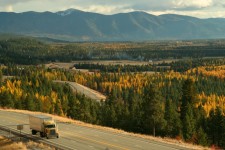Hundreds of thousands of caribou stampeding across the tundra of northern Alaska tends to be the iconic photo of caribou. Barren-ground caribou, such as those in Alaska, are known for their seasonal migrations between the northern tundra and the inland boreal forests. However, not all caribou inhabit the tundra or make seasonal long-distance migrations every year.
Woodland caribou inhabit boreal or mixed-conifer forests year-round. Caribou in forests may seem out of place, but so did woodland buffalo the first time I saw them in northern British Columbia. Woodland buffalo are northern cousins to the plains buffalo that we are familiar with.
Woodland vs. barren-ground caribou
Woodland caribou are the southern cousin to the barren-ground caribou. Both are the same species, but are divided into two groups based on a few different physical characteristics and the type of habitat they occupy.
The caribou that inhabit the Selkirk Mountains of Idaho, Washington and southern British Columbia are considered woodland caribou. They don’t migrate long distances like barren-ground caribou, but instead move in elevation throughout the year in response to snow levels, food availability and predator avoidance–similar to elk and deer.
Woodland caribou are slightly larger than barren-ground caribou and have heavier, more compact antlers. Unlike the rest of the deer family, both the female and male caribou grow antlers. Woodland and barren-ground caribou diverged from the same lineage but differences resulted as they each became adapted to their respective habitat.
During the last ice age, the continental ice sheet separated the caribou either to the north towards the Arctic and Alaska or south into the United States at the southern edge of the ice sheet. This separation caused them to become genetically different enough to be considered separate subspecies.
There are areas in Canada where both subspecies inhabit the boreal forest–the woodland caribou year-round and the barren-ground caribou seasonally. Between both subspecies, caribou roamed most of Canada, Alaska and the northern tier of the contiguous United States after the ice age. Caribou once lived as far south as Salmon, Idaho and northern Minnesota.
What impacts the caribou population?
A combination of factors caused the populations to decline and to move northward. The advance of human settlement across the country brought hunting, logging and livestock.
Woodland caribou feed on arboreal lichens during the winter, which only grow on mature trees. When the mature trees were logged, the new growth brought in whitetail deer. The younger forests and open land was ideal for deer and domestic livestock, which pushed the caribou northward. Additionally, whitetail deer carry a parasitic worm that is harmless to them but fatal to caribou.
One group of caribou has held out in the Lower 48, here in the Selkirk Mountains. While the population isn’t huge and they probably spend most of their time in the Canadian portion of the Selkirks, there is always a chance of seeing one.
The spectacle of thousands of caribou on the arctic tundra would be an amazing sight to see but so would an elusive woodland caribou in the Selkirk Mountains.
Originally published March 2011. Updated Febrary 2024.

